When it comes to home safety, some threats are obvious—but others, like asbestos, lurk beneath the surface. If your home or business was built before 1980, there’s a good chance that asbestos is hiding in the materials around you. It’s odorless, tasteless, and invisible to the naked eye—yet it can be deadly. That’s why Valley Restoration & Construction takes asbestos so seriously.
We’re fully certified in asbestos abatement and available 24/7 to help homeowners and business owners across Montrose, Delta, Olathe, Ouray, and Telluride identify and safely remove this hazardous material. Here’s what you need to know about this silent killer—and what to do if you think it’s in your home.
A Brief History of Asbestos Use
Asbestos use dates back over 4,000 years to ancient civilizations, including the Egyptians, Greeks, and Romans, who valued its fire-resistant properties. The Greeks even wrapped their dead in asbestos cloth to preserve their bodies in the fire of cremation. The Romans used it in tablecloths and napkins, marveling at how the cloths could be cleaned simply by throwing them into the flames.
In the 1800s, during the Industrial Revolution, asbestos became a staple in manufacturing and construction. It was considered a “miracle mineral” because of its strength, flexibility, heat resistance, and sound insulation. Industries began using asbestos to insulate steam pipes, turbines, boilers, kilns, and electrical generators. Its use skyrocketed through the 20th century, particularly during World War II, when shipbuilders used it extensively.
After the war, asbestos was widely incorporated into construction materials, including insulation, roofing shingles, vinyl floor tiles, cement compounds, ceiling tiles, and even textured paint. It was inexpensive, durable, and effective—until the devastating health consequences came to light.
Despite mounting medical evidence and growing legal battles throughout the 1960s and 70s, asbestos use wasn’t fully curtailed in the United States until the 1980s. And even now, asbestos is not completely banned in the U.S. This means many older homes and buildings still contain asbestos-laden materials, making it a continued threat during renovations, demolitions, or natural disasters.
Where is Asbestos Commonly Found Inside Homes?
Asbestos was used in a wide variety of residential building materials up through the 1980s. While it was once prized for its heat resistance and strength, we now know it poses serious health risks—especially when disturbed. Below are the most common areas where asbestos might be hiding in older homes.
Insulation
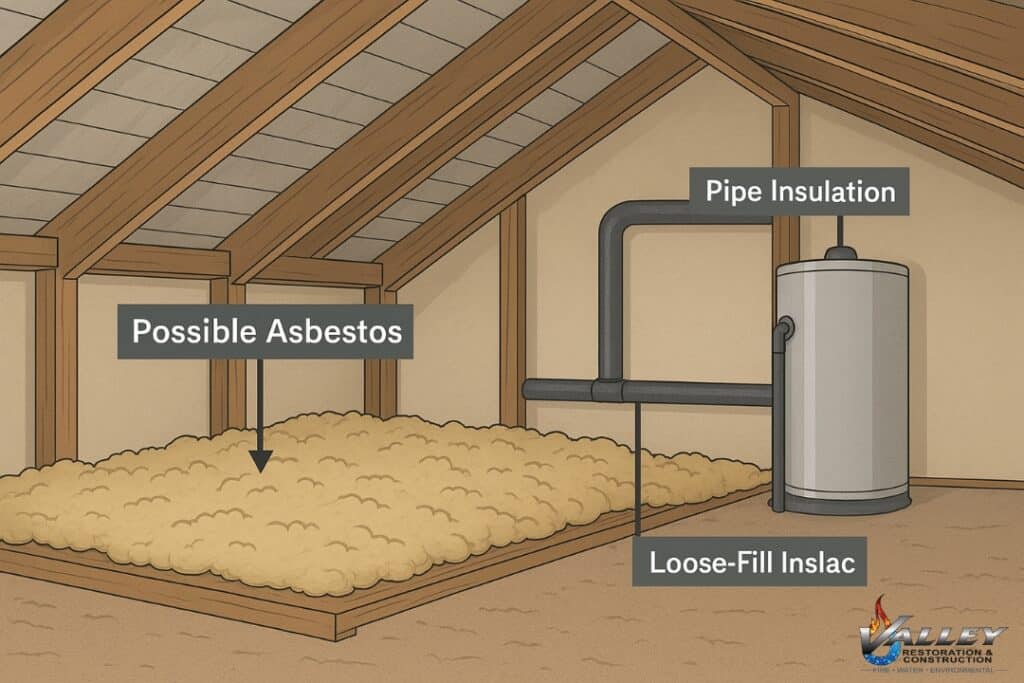
Asbestos was widely used in home insulation, particularly in attics, crawl spaces, and around HVAC systems. It was commonly found in loose-fill insulation, pipe insulation, and insulation blankets surrounding boilers and water heaters. Vermiculite insulation, a lightweight, pebble-like product often used in attics, is a well-known example that may contain asbestos. When insulation breaks down or is disturbed during repairs or renovations, asbestos fibers can easily become airborne.
Ceiling Tiles and Popcorn Ceilings

Acoustic ceiling tiles and spray-on “popcorn” textures—popular from the 1950s through the 1980s—often contain asbestos. These materials were commonly used to dampen sound and hide imperfections. If the ceiling becomes damaged or deteriorates over time, tiny asbestos fibers can be released into the air. Scraping, sanding, or removing these ceilings without proper precautions can pose serious health hazards.
Vinyl Flooring and Adhesives
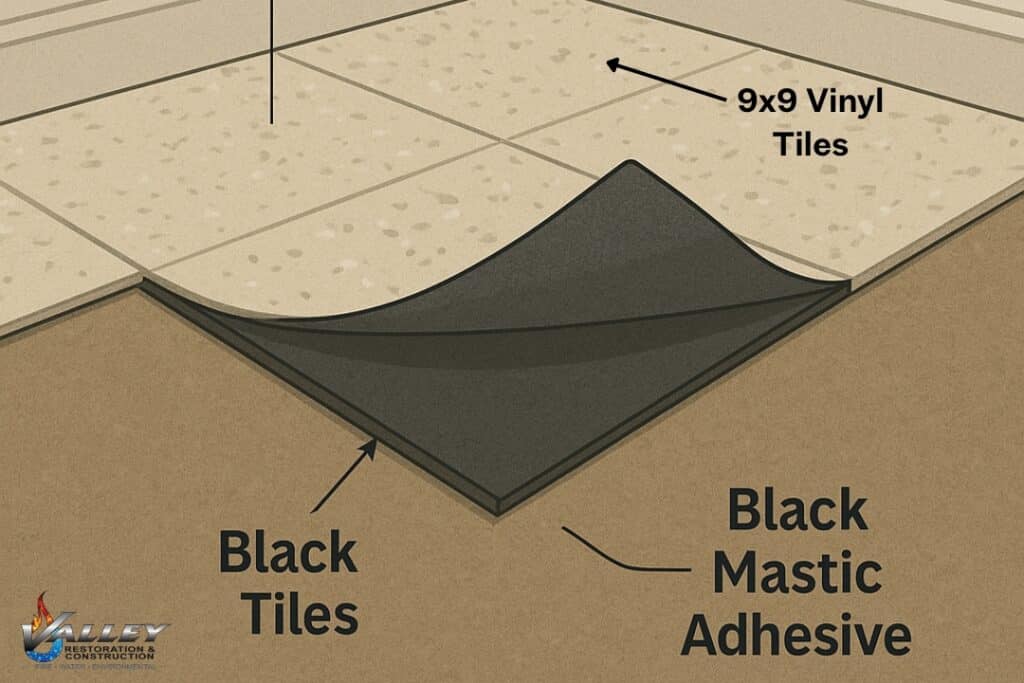
Vinyl floor tiles—especially the 9-inch by 9-inch tiles used in mid-century homes—were frequently manufactured with asbestos. Additionally, the adhesive or “mastic” used to glue tiles to the floor often contained asbestos as well. Over time, flooring can become brittle or begin to peel up, increasing the risk of fiber release. Removing or refinishing these floors without professional help can expose you to dangerous levels of asbestos.
Roofing and Siding Materials
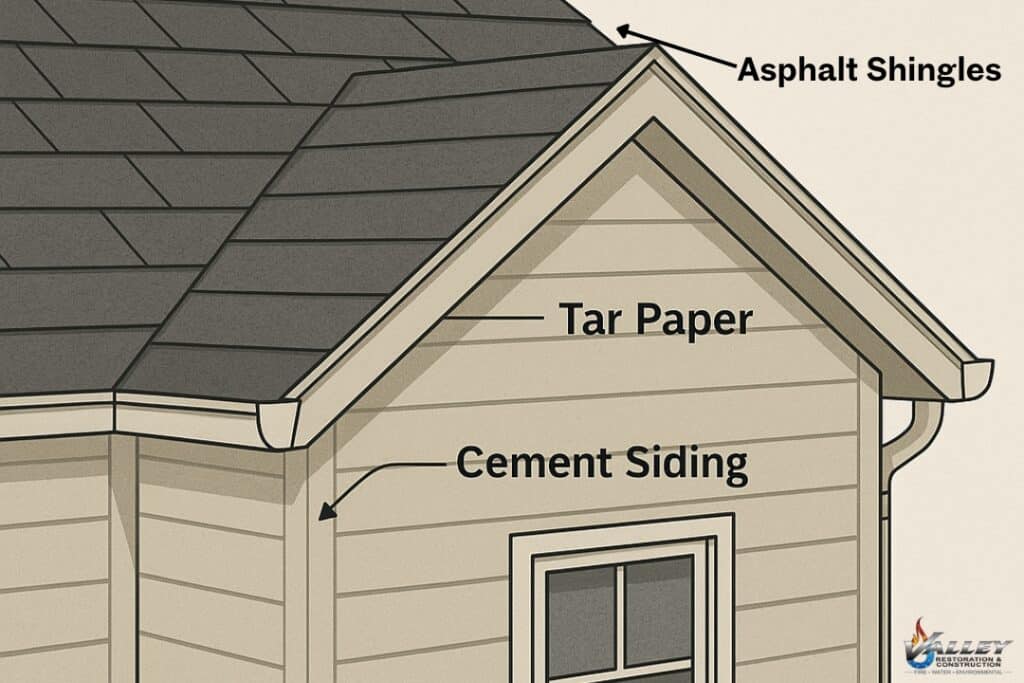
Asbestos was commonly mixed into roofing shingles, tar paper, and siding materials like cement board (commonly known as “transite”). These products were praised for their fire resistance and durability. However, when exposed to weathering, breakage, or remodeling, they can release asbestos fibers into the surrounding environment. Roofing repairs, in particular, pose a high risk of disturbing these materials if asbestos is present.
Drywall and Joint Compound
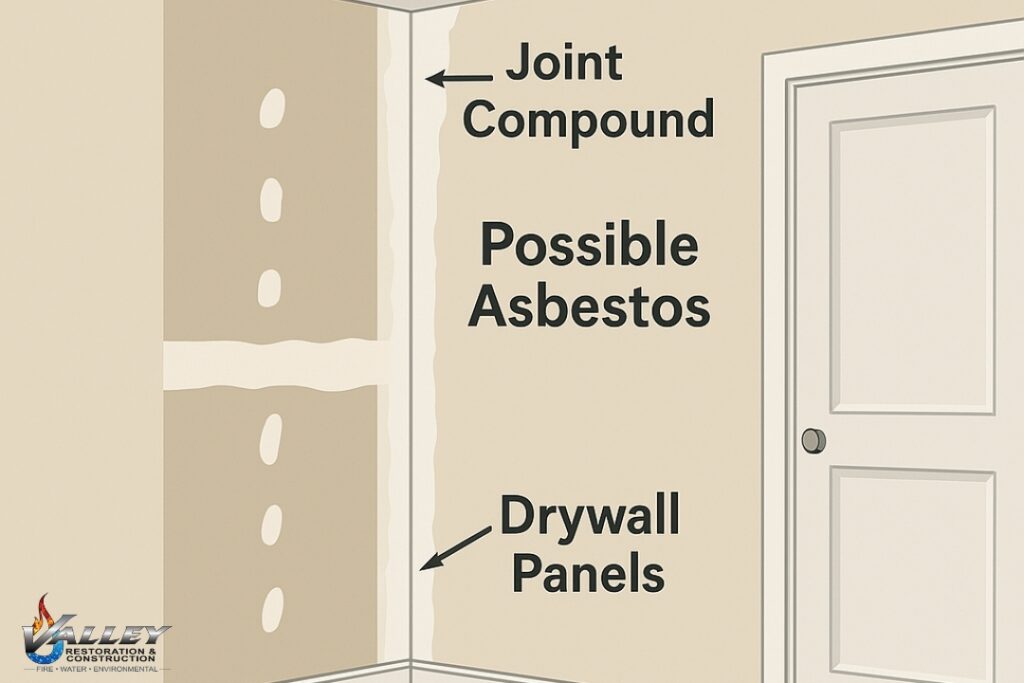
In older homes, drywall and the joint compound used to seal seams often contained asbestos. The danger lies not just in the walls themselves, but in the sanding process used to smooth them out—this is when the compound can become friable (easily crumbled) and release hazardous fibers. Even drilling into walls to hang a picture or install shelving could disturb these materials.
Pipes and Ductwork
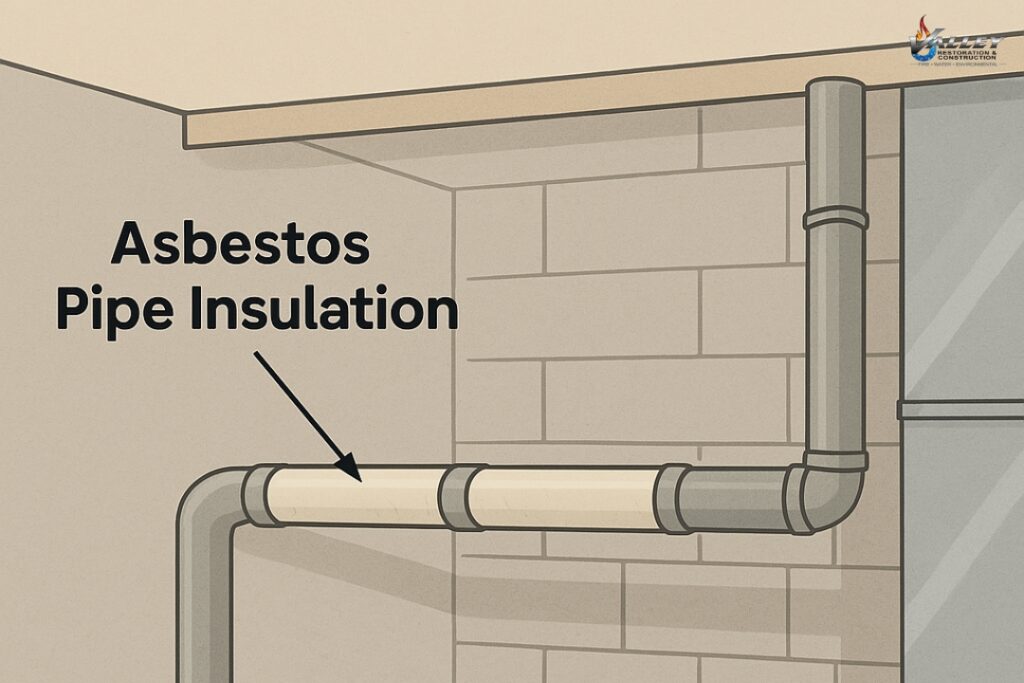
Asbestos was widely used to insulate hot water and steam pipes as well as ductwork for HVAC systems. Wrapping tape, blankets, or pipe lagging often contained asbestos, particularly in basements and utility rooms. Over time, the insulation can deteriorate, flake, or fall apart, making these areas especially dangerous. Even brushing against deteriorating pipe wrap can release fibers.
Textured Paint and Coatings

Decorative wall and ceiling finishes—especially spray-applied textured paints—often included asbestos to add thickness and fire resistance. These finishes were typically applied with a hopper or sprayer and can become brittle and flaky over the years. Removing or repainting these surfaces without disturbing the texture is difficult, and any scraping or sanding increases the risk of exposure.
The Invisible Killer: How Asbestos Harms Your Health
Asbestos has earned the nickname “the invisible killer” for good reason—it hides in plain sight, causes no immediate symptoms, and strikes years after exposure. Unlike mold, which often has a distinct smell or visible signs, asbestos is a microscopic fiber you can’t see, smell, or taste. Yet once it becomes airborne and enters your lungs, the damage begins—silently and irreversibly.
When asbestos-containing materials (ACMs) are disturbed, the tiny fibers they release can remain suspended in the air for hours or even days. These fibers are sharp and needle-like, and once inhaled, they embed themselves deep within the lungs or other tissues. The body cannot expel or break down these foreign invaders, so they remain lodged in place, creating scar tissue and cellular damage that can eventually develop into serious health conditions.
The most disturbing part? Symptoms often don’t show up for 20 to 30 years after exposure. You could breathe in asbestos dust during a home renovation project today and not feel the effects until decades later. That’s why asbestos-related diseases are often diagnosed too late for effective treatment.
Why Exposure Is So Easy to Overlook
Most people exposed to asbestos had no idea it was happening at the time. Maybe you were helping a relative renovate an old home, pulling up tile, tearing out drywall, or scraping off an old popcorn ceiling. Maybe you moved into a house built in the 1960s and didn’t know that the insulation in the attic or around the pipes contained asbestos. All it takes is one poorly ventilated project, one afternoon with a sander, or one moment of unknowingly breaking into a contaminated wall or ceiling.
Because asbestos exposure is so easy to miss, and its effects take so long to appear, it’s one of the most dangerous environmental hazards you can have in your home. It’s not about panic—it’s about preparedness. If you suspect asbestos might be present, don’t guess. Get it tested, and if necessary, removed by certified professionals like the team at Valley Restoration.
Why You Should Never Attempt Asbestos Removal on Your Own
You can’t see or smell asbestos, and disturbing it makes the situation worse. DIY removal attempts are not only dangerous but often illegal. In Colorado, asbestos abatement must be performed by certified professionals who follow strict safety protocols.
At Valley Restoration, our technicians are certified by the Colorado State General Abatement Contractor. We follow every regulation and use specialized equipment to keep you, your family, and your property safe throughout the process.
Attempting to remove asbestos on your own could expose you and your household to deadly fibers—and put you at risk of violating state regulations. Proper containment, disposal, and decontamination are not possible without the right equipment and training. It’s not worth the risk. Let the professionals handle it.
What to Do If You Suspect Asbestos
If you’re planning to renovate an older property or you’ve found crumbling insulation, ceiling tiles, or flooring that may contain asbestos, here are your next steps:
- Don’t touch or disturb the material.
- Leave the area and avoid creating dust or airflow.
- Call Valley Restoration & Construction immediately.
We’ll inspect your property and develop a safe, compliant plan for removal and disposal. Our team is available 24/7 for emergencies and can guide you through the insurance process as well.
Call Valley Restoration—Your Local Asbestos Abatement Experts
With over a decade of experience and deep roots in the Western Slope community, Valley Restoration is your trusted partner for emergency asbestos removal. We’re not a big-box franchise—we’re your neighbors, and we’re here when you need us most.
Whether you’re dealing with an emergency, preparing for a renovation, or buying an older home, give us a call. We’ll take the worry off your shoulders and ensure your home or business is safe from the hidden dangers of asbestos.
Call 970-964-4437 today or contact us online to schedule your asbestos inspection.
